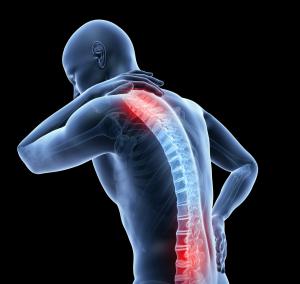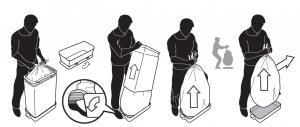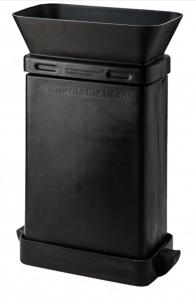HFI-U Recommends Ergonomic Facility Waste Handling and Recycling
Ergonomic interventions for waste and recyclables handling reduce cleaning worker injuries, insurance claims, and related costs.
NAMPA, ID, US, January 16, 2020 /EINPresswire.com/ -- HFI-U is recommending simple ergonomic interventions for waste and recyclables handling that reduce cleaning worker injuries, insurance claims, and related costs to business.
Since the US Bureau of Labor Statistics (BLS) states professional cleaning workers have relatively high rates of injury - and since waste handling and disposal is a primary job function - it is vital janitorial workers have the right training, techniques and tools to safely dispose of the waste generated by business.
Fitness First
Simple exercises that strengthen the back, neck, shoulders, and legs are helpful for custodial teams, as their jobs involve a fair amount of lifting and bending.
These may include:
1. Bent-Over Rowing Using an Elastic Band for Resistance
2. Reverse Flys
3. Isometrics
4. Shoulder Retractions
5. Squats, Lunges, and Other Exercises
Be sure workers warm up, and a doctor approves whatever exercises are selected.
Next, choose methods and equipment that reduce lifting and awkward motions.
Safer Techniques and Tools
Per the UCLA Cleaning Workers Research Database, a 2004 study by Leeds Metropolitan University found “casual employees had less desirable and predictable work schedules … and more associated health complaints than ‘permanent’ workers.”
Higher-than-average turnover and prevalence of short-term employees in custodial work should drive the value of ergonomically “worker-proofing” waste and recyclable handling to reduce injury due to excess or improper lifting.
This can be as simple using smaller receptables (e.g., 23 gallons vs. 55 gallons) and emptying frequently to prevent overfilling.
A useful innovation is the newer ergonomic-release waste container with a foot-activated removable base (Ref: EZ Dump) that frees the main body of the container from the bottom, liberating the full liner from the container to be removed using two hands rather than one-handed “dead-lifting” the bag from a single-piece receptacle.
Removing the comparatively lightweight upper portion of the container also eliminates fighting the suction/friction forces integral to unibody receptacles, and stops forcing workers to lift heavy loads above waist level to free bags from containers. This also increases load control and physical efficiency.
Per human factors specialist, Joseph Velasquez, Clinical Lecturer at Arizona State University, it is important from an ergonomic standpoint to avoid “forced lifting” of heavy trash or recycling loads, and “keeping contents close to the floor yields ergonomic benefits…”
Per Dr. Thomas Renner, President and Founder of Corporate Injury Management Associates, using the newer ergonomic-release receptacles means very little effort is needed to remove the trash bag, whereas removing the bag from a standard container often prompts using “forward flexion techniques resulting in anterior shoulder displacement, and this biomechanical position significantly increases the risk of shoulder and low back injury.”
Reducing Costs While Saving Backs
When using ergonomic-release receptables - due to lighter demands on liners - trash bags last longer, require less tensile strength and puncture resistance, reduce the need to double bag to prevent leaks, and save money.
Less physical demand on workers is perhaps the greatest benefit of all, as reducing back injury and strains is not only a satisfying health outcome but - since an average back injury costs $37,000 - a gratifying bottom line benefit as well.
Allen Rathey
HFI University (HFI-U)
+1 208-724-1508
email us here
Legal Disclaimer:
EIN Presswire provides this news content "as is" without warranty of any kind. We do not accept any responsibility or liability for the accuracy, content, images, videos, licenses, completeness, legality, or reliability of the information contained in this article. If you have any complaints or copyright issues related to this article, kindly contact the author above.



